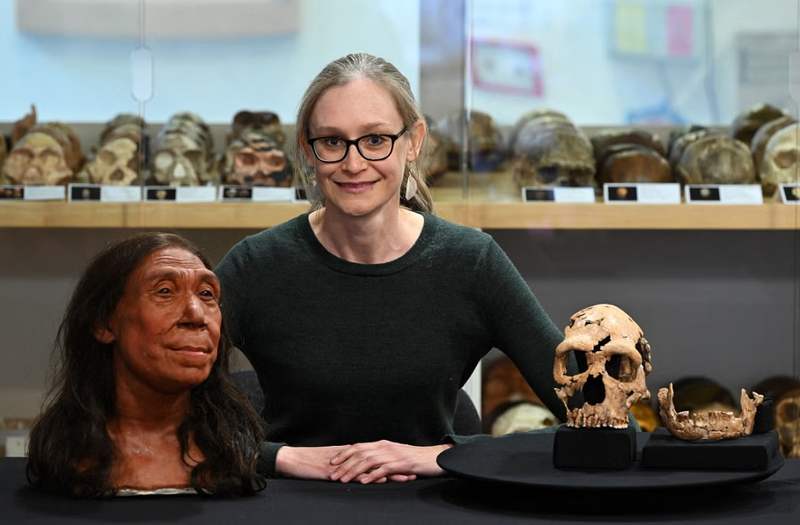Wed 08 May 2024:
A British team of archaeologists on Thursday revealed the reconstructed face of a 75,000-year-old Neanderthal woman, as researchers reappraise the perception of the species as brutish and unsophisticated.
Giving an insight into how the woman would have looked when she was alive, the face was reconstructed using a smashed skull found in 2018.
As per a report by news agency AFP, the woman has been named Shanidar Z, after the cave in Iraq’s Kurdistan where the skull was discovered. This discovery also led to the investigation of over 40 Neanderthal women, who were laid to rest in a sleeping position beneath a huge vertical stone marker.
According to the BBC, the face was assembled out of the shattered remains of the skull. The report claimed the bones were extremely soft like “a well-dunked biscuit”.
Before assembling, the researchers first had to strengthen the fragments. After this, the expert paleoartists created the 3D model, the report added.
It must be noted that the last Neanderthals mysteriously died around 40,000 years ago, which is just a few thousand years after humans arrived.
The AFP report stated that Shanidar Z’s skull was flattened to a thickness of two centimetres (0.7 inches), possibly by a rock fall, which may have happened soon after she died.
However, it is still considered the best preserved Neanderthal find of this century.
In a conversation with the news agency, University of Cambridge’s Professor Graeme Barker, who led the excavations, said the team had “never expected to get more Neanderthals”.
It is believed that the lower part of Shanidar Z’s skeleton was excavated in 1960—during ground-breaking excavations by American archaeologist Ralph Solecki.
In the same excavation, Ralph Slecki found the remains of at least 10 Neanderthals.
Mr Ralph’s discovery of a cluster of bodies, wherein one was surrounded by a bunch of ancient pollen, made him argue that this was evidence of funerary rituals.
Talking about the “flower burial” theory, Professor Graeme Barker said, “We wanted to try and date these burials… to use the site to contribute to the big debate about why the Neanderthals died out, and then we started finding these bits.”
Shanidar Z is the fifth body to be identified in the cluster buried over at least several hundred years.
The experts believe the stone was used as an identifier to allow the roaming Neanderthals to return to the same spot to bury their dead.
The Cambridge palaeo-anthropologist, Emma Pomeroy, who uncovered Shanidar Z, stated that finding the skull and upper body had been both “exciting” and “terrifying”. Ms Pomeroy added that the task had been like a “high stakes 3D jigsaw puzzle”.
SOURCE: INDEPENDENT PRESS AND NEWS AGENCIES
______________________________________________________________
FOLLOW INDEPENDENT PRESS:
WhatsApp CHANNEL
https://whatsapp.com/channel/0029VaAtNxX8fewmiFmN7N22
![]()
TWITTER (CLICK HERE)
https://twitter.com/IpIndependent
FACEBOOK (CLICK HERE)
https://web.facebook.com/ipindependent
YOUTUBE (CLICK HERE)
https://www.youtube.com/@ipindependent
Think your friends would be interested? Share this story!






